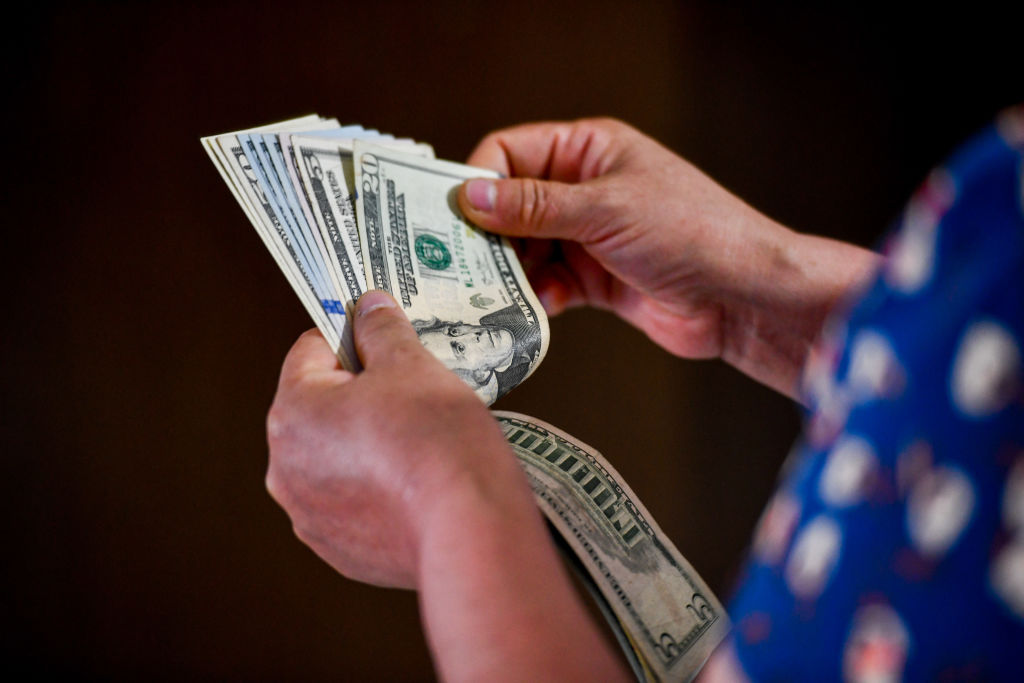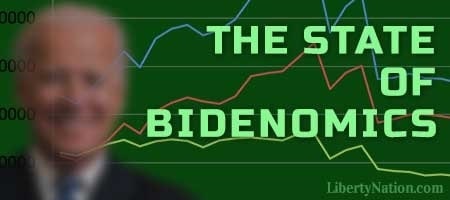The third-quarter GDP is in, but what lurks beneath the headline numbers?
Who knew that Bidenomics was the magic cure the US economy needed all along? According to the latest third-quarter GDP figures released Thursday, October 26, all that was needed to accelerate the United States economy and move on from the coronavirus pandemic to achieve a new era of prosperity, was massive amounts of spending and borrowing. Ditto for the consumer. Despite the public enduring a brutal trifecta of high inflation, rising borrowing costs, and increasing debt, shoppers consumed like it was nobody’s business. This is apparently the new strategy for driving economic growth: spending money the country does not have.
Inside the GDP
The headline third-quarter GDP was – at least on the surface – a blockbuster event. During the July-September period, the economy grew 4.9%, up from 2.1% in the previous quarter, according to the Bureau of Economic Analysis. It topped the consensus estimate of 4.3% but came in just below the widely watched Federal Reserve Bank of Atlanta’s GDPNow model. This represented the fifth consecutive quarterly gain and allowed the US to avert the much-anticipated recession, although the nation slipped into a technical downturn in the first half of 2022.
The two main drivers of growth? Consumers and governments. Real consumer spending soared 4%, contributing 2.69% to the final GDP numbers. Of course, considering the recent under-the-radar BEA report, the GDP will probably be revised upward in the subsequent two estimates and then downward in a few years.
But while business media outlets champion Taylor Swift concerts and the so-called Barbenheimer event (the opening of the Barbie and Oppenheimer movies) of this past summer as key drivers of growth, it would be more appropriate to wonder how consumers funded their spending. Personal consumption expenditure (PCE) prices – the Fed’s preferred inflation indicator – swelled from 2.5% to 2.9% in the third quarter. Real disposable personal income fell 1%, and the personal savings rate plunged from 5.2% to 3.8%.

(Photo Illustration by Sheldon Cooper/SOPA Images/LightRocket via Getty Images)
Government spending was also monumental in the three months ending September. Federal outlays surged 6.2%, national defense grew 8%, and state and local spending climbed 3.7%. All three levels of the Leviathan added nearly 1% to the chief print. It is safe to say that politicians and bureaucrats were not using taxpayer resources, borrowed money, or freshly created Federal Reserve Notes on tickets to Swift concerts or the Barbie motion picture.
Both the consumer and the government are drowning in red ink. Household debt is at a record high of $17 trillion, including more than $1 trillion in credit card debt. Washington is suffocating under the weight of a $33.6 trillion national debt, a $1.7 trillion federal deficit, $1 trillion in interest payments, and $200 trillion in unfunded liabilities and expenditures. It is safe to opine that much of the economic growth witnessed in the third quarter was fueled by debt. All it took to juice the GDP was one of the highest deficits in US history.
Can you really grow an economy with IOUs?
Meanwhile, other GDP report components identified some weakening throughout the marketplace. Final sales to private domestic purchasers slid to 3.3%. Non-residential fixed investment, which is perhaps the most critical aspect of the BEA’s findings because it supports sustainable long-term growth, was flat and has slowed on an annualized basis. But at least exports and private inventory investment popped and offset the drop in imports.
Long Live Bidenomics
 Almost inevitably the White House issued a statement celebrating the good news by touting Bidenomics. “I never believed we would need a recession to bring inflation down – and today we saw again that the American economy continues to grow even as inflation has come down. It is a testament to the resilience of American consumers and American workers, supported by Bidenomics—my plan to grow the economy by growing the middle class.”
Almost inevitably the White House issued a statement celebrating the good news by touting Bidenomics. “I never believed we would need a recession to bring inflation down – and today we saw again that the American economy continues to grow even as inflation has come down. It is a testament to the resilience of American consumers and American workers, supported by Bidenomics—my plan to grow the economy by growing the middle class.”
Yes, his handlers conveniently omitted the technical recession in the first half of 2022. Still, the president correctly cited his economic doctrine as the leading cause for the strong GDP because it will grace headlines and reports everywhere. But for individuals who know better, it is far more akin to the classic Raymond Chandler line from The High Window, “From 30 feet away, she looked like a lot of class. From ten feet away, she looked like something made up to be seen from 30 feet away.”

